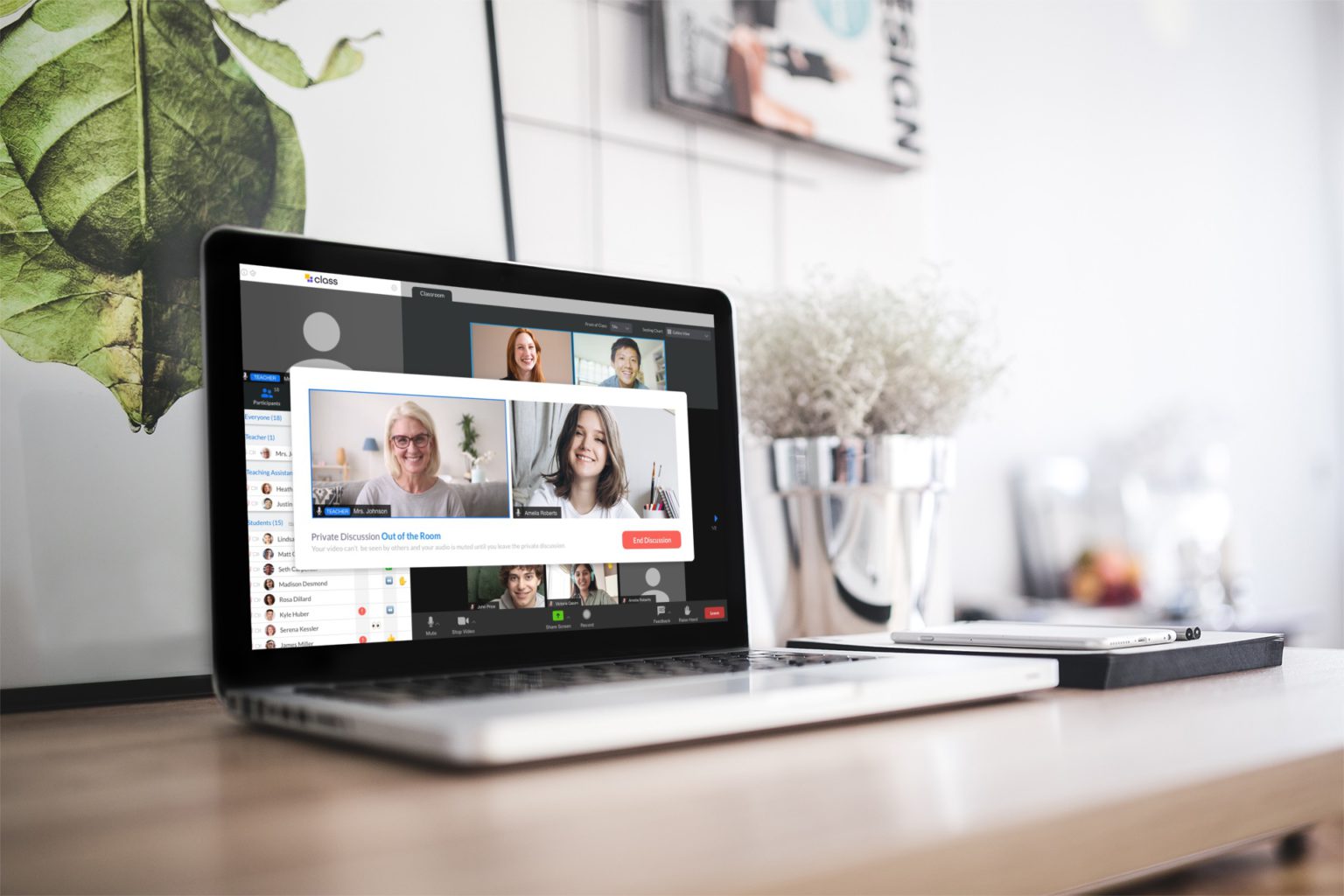
Class is the next generation virtual classroom for K-12, higher education, government agencies, and the workplace. Contact us today to schedule your live demo and see Class in action.

Class is the next generation virtual classroom for K-12, higher education, government agencies, and the workplace. Contact us today to schedule your live demo and see Class in action.

Since early 2020, teaching with Zoom has become the norm for teachers of all kinds, at all levels of education. It’s a trend that isn’t likely to end any time soon, as teachers and students have adapted to both online and hybrid teaching models during the pandemic. While prior to the pandemic, many teachers would have said they would not prefer teaching online, that sentiment has rapidly shifted due to a large degree to the availability of online teaching platforms like Zoom.
A research article in the International Journal of Educational Technology in Higher Education covers the transition to the “new normal” of learning—a transition that has impacted schools and universities around the globe. “According to UNESCO, as of April 10, 2020, more than 188 countries had implemented nationwide school and university closures, impacting over 91% of the world’s student population.” UNESCO indicates that almost 1.2 billion students around the world have been affected by school closings during the pandemic and forced to abruptly shift to online learning.
It’s a move that not all were thrilled about. The article points to the results of a 2017 study by EDUCAUSE based on responses from 11,141 faculty from 131 U.S. institutions where only 9% of respondents indicated that they preferred to teach an online course—meaning, they said, that “a whopping 91% of faculty do not wish to teach in a completely online environment.” Unfortunately, over the past several months many have had no choice but to do exactly that.
The good news, though, is that the online classroom experience hasn’t been as bad as many had feared. In fact, teaching with zoom, augmented with education-specific tools like Class, has helped many instructors effectively engage students in virtual classroom settings.

Researchers Khe Foon Hew, Chengyuan Jia, Donn Emmanuel Gonda and Shurui Bai set out to determine “the effect of fully online flipped classrooms on student learning performance.” Their results support the effectiveness of online instruction and reveal some best practices for “web conferencing-assisted online flipped classrooms.” They write: Quantitative analyses of students’ final course marks reveal that the participants in the fully online flipped classes performed as effectively as participants in the conventional flipped learning classes.” That’s good news for teachers and students alike.
The best practices for teaching with Zoom they identified include:
Zoom also offers some best practices for setting up a virtual classroom, primarily related to security:
Teachers themselves, of course, have identified a wide range of best practices for using Zoom in the classroom—many of those best practices can be found online through simple searches for keywords like “Zoom tips for teachers,” “Zoom tips for students,” “Zoom tips for beginners,” or “Zoom hacks for teachers.”
Here we share some of those best practices.
Bethany McCarter has taught adult English as a second language at her local community college for several years and has presented on the use of long-distance technology to her colleagues. Her best practice advice includes having backup lessons on hand just in case technology fails, spending just as much time building relationships in the online environment as in traditional classrooms as well as using breakout rooms for larger classes. For engagement, she says: “Simple questions to start the lesson off work great.” For instance: “Type in the chat what you ate for breakfast this morning.”
Wendy Ince, a professor at Pasadena City College, lifelong educator, and part-time tutor at LA Tutors, recommends moving students’ photo box images as close to your camera as possible. This, she says, “will make it look most like you are making eye contact with the students.” Make an effort to speak to the camera rather than the screen, she recommends.
Ince also recommends setting up individual office hours to meet individually with students at the beginning of the semester. “It makes certain that each student gets a personalized introduction, not just those who are forward enough to introduce themselves,” she says.
Felix Prasetyo, a recent graduate in computer science from the University of British Columbia, did research in collaboration with students from the psychology department on how to make online classrooms more engaging as part of his UI/UX class. He says his students found, “that when professors display an agenda at the start of the class sessions to show students what to expect, we saw a significant increase in student engagement and participation throughout the class.” This was measured by “calculating the number of chat messages, uses of emojis such as the thumbs up, as well as the number of students opening their cameras and audios to ask questions.”
Another best practice Prasetyo and his research team discovered was that “professors who give participation grades tend to have more engagement with their students.” This was true, he says, in both face-to-face and online courses. The team also found that students were more comfortable engaging via chat than talking to the camera.
In fact, Janet Ferone, president of Ferone Educational Consulting and a lecturer at Lesley University and Curry College, advises against requiring students to have their cameras on. “There are so many reasons why cameras should be optional,” she says. “Equity issues of students living in substandard housing or in a car in a parking lot to grab wi-fi if they don’t have it at home, weak wi-fi where video interferes with connectivity, students with anxiety unable to focus on academics due to worries about everyone staring at them, students with autism or ADHD becoming distracted by all the blocks and faces and also needing privacy for movement to better focus.”
Instead, Ferone suggests: “You can engage students by using polls or asking for comments in chat—either to you directly to the whole group—and use apps to capture their thoughts.” Be judicious, though, she recommends. Using too many can overwhelm students.
Ferone also recommends seeking feedback from students. “After the first week of assigning a lot of video content, I used a poll to check in with students on the format,” she says. “Since polls are anonymous, I knew I could get more honest feedback and, as a result, I switched to less video and more varied media based on student choice.”
However, says Miriam Bowers-Abbott an associate professor at Mount Carmel College of Nursing, best practice can change fast. “At first it was ‘don’t require cameras,’ because of privacy issues. Then it was ‘require cameras’ for engagement issues. Now we’re back at ‘don’t require cameras’ again to address Zoom fatigue.” Bowers-Abbott recommends that teachers study their own interactions with students to determine what works best for them. “Technology and students themselves change at a pace that’s too fast for research to capture,” she says.

Class is the next generation virtual classroom for K-12, higher education, government agencies, and the workplace. Contact us today to schedule your live demo and see Class in action.

Class is the next generation virtual classroom for K-12, higher education, government agencies, and the workplace. Contact us today to schedule your live demo and see Class in action.
Get our insights, tips, and best practices delivered to your inbox

Sign up for a product demo today to learn how Class’s virtual classroom powers digital transformation at your organization.

Features
Products
Integrations